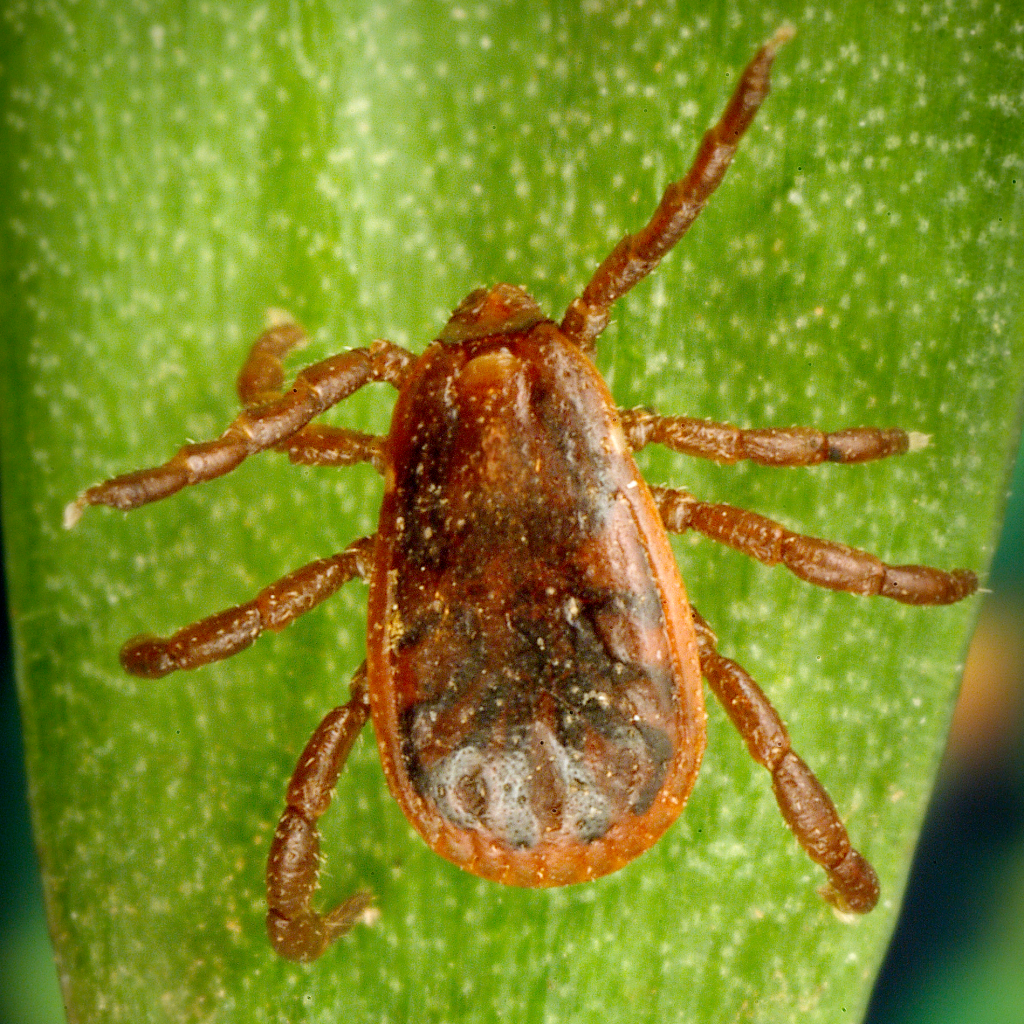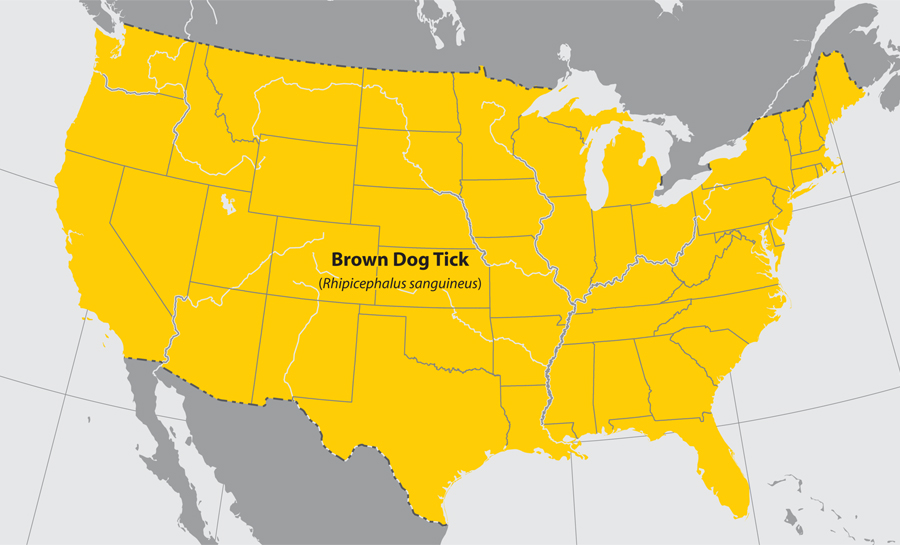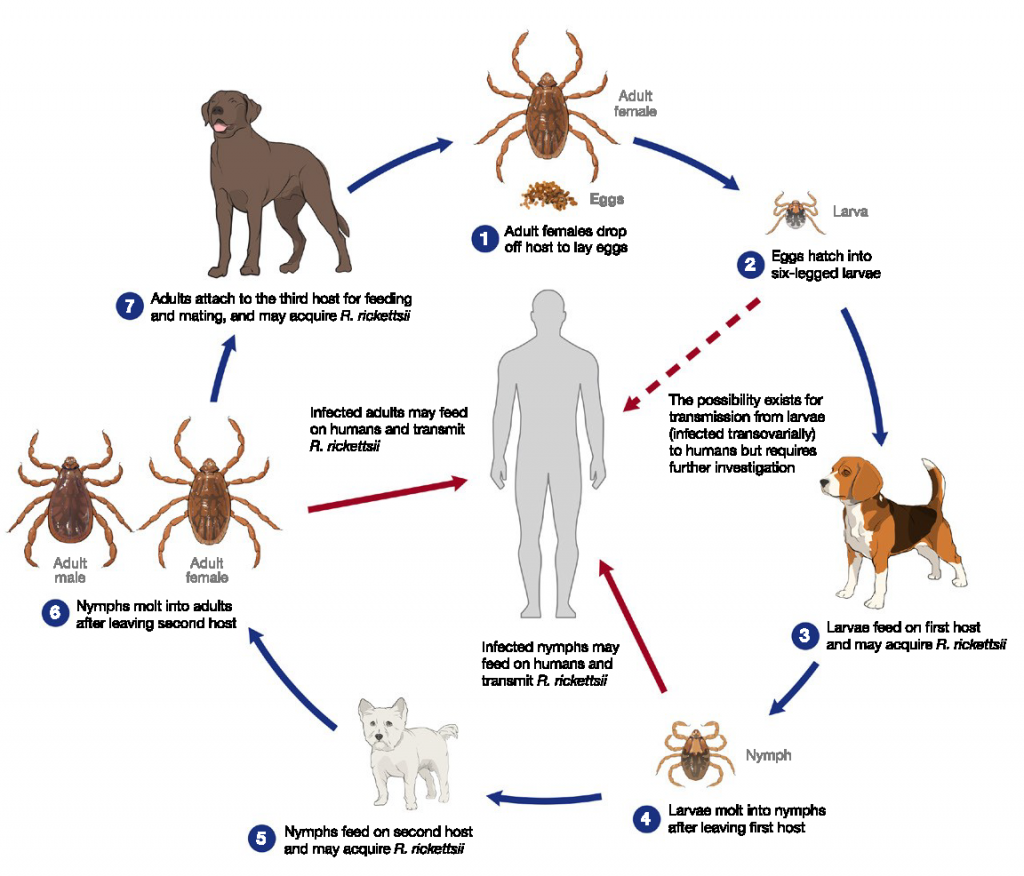BROWN DOG TICK
Rhipicephalus sanguineus
The hard tick (Ixodidae) identified below pose health risks for both humans and animals in the Pacific Southwest. Hard ticks are recognized by their mouth parts that project forward from the body and for having a hard outer shell, also known as scutum.

Brown dog ticks can carry and spread pathogens that are responsible for diseases in both humans and animals. Brown dog ticks are primary vectors for Rickettsia rickettsii (pathogen) transmission in the southwestern United States and along the U.S.-Mexico border.
- Rickettsia rickettsii (pathogen) – Rocky Mountain spotted fever (disease)
Brown dog ticks can be found worldwide. Visit the CDC website for more information.
The brown dog tick is unique in that it can complete its entire life cycle indoors. In contrast to the other hard ticks, the risk of coming into contact with the brown dog tick is not necessarily from hiking or other outside activities.
View full CDC fact sheet.
TICK RESOURCES
Learn about the tick species that pose health risks for both humans and animals in the region and view public health information on ticks.
GOT TICKS? CONTACT BiTeRS!
The Border Tick and Rickettsia Surveillance (BiTeRS) program of PacVec offers services to enhance surveillance for ticks and tick-borne pathogens of human health concern in California and Arizona.
The Pacific Southwest Regional Center of Excellence in Vector-Borne Diseases is supported through Cooperative Agreement Number 1U01CK000649 between the Centers for Disease Control and Prevention (CDC) and the University of California, Davis.
© 2025 – All rights reserved

